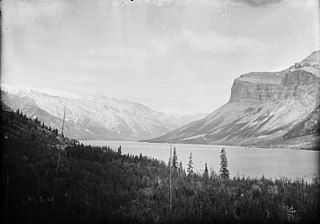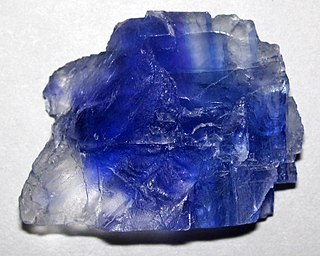The Muskwa Formation is a stratigraphical unit of Frasnian age in the Western Canadian Sedimentary Basin.

The Redknife Formation is a stratigraphical unit of Devonian age in the Western Canadian Sedimentary Basin.
The Schooler Creek Group is a stratigraphic unit of Middle to Late Triassic age in the Western Canadian Sedimentary Basin. It is present in northeastern British Columbia. It was named for Schooler Creek, a left tributary of Williston Lake, and was first described in two oil wells northwest of Fort St. John, by F.H. McLearn in 1921. Exposures along Williston Lake serve as a type locality in outcrop.
The Wabamun Formation is a stratigraphic unit of Late Devonian (Famennian) age in the Western Canada Sedimentary Basin. It takes the name from Wabamun Lake and was first described in the Anglo Canadian Wabamun Lake No. 1 well by Imperial Oil in 1950.
The Fort Simpson Formation is a stratigraphical unit of Devonian age in the Western Canadian Sedimentary Basin.

The Palliser Formation is a stratigraphic unit of Late Devonian (Famennian) age in the Western Canada Sedimentary Basin. It is a thick sequence of limestone and dolomitic limestone that is present in the Canadian Rockies and foothills of western Alberta. Tall cliffs formed of the Palliser Formation can be seen throughout Banff and Jasper National Parks.
The Beaverhill Lake Group is a geologic unit of Middle Devonian to Late Devonian age in the Western Canada Sedimentary Basin that is present in the southwestern Northwest Territories, northeastern British Columbia and Alberta. It was named by the geological staff of Imperial Oil in 1950 for Beaverhill Lake, Alberta, based on the core from a well that they had drilled southeast of the lake, near Ryley, Alberta.

The Elk Point Group is a stratigraphic unit of Early to Middle Devonian age in the Western Canada and Williston sedimentary basins. It underlies a large area that extends from the southern boundary of the Northwest Territories in Canada to North Dakota in the United States. It has been subdivided into numerous formations, number of which host major petroleum and natural gas reservoirs.
The Woodbend Group is a stratigraphical unit of Frasnian age in the Western Canadian Sedimentary Basin.
The Trout River Formation is a stratigraphical unit of Late Devonian age in the Western Canadian Sedimentary Basin.
The Kotcho Formation is a stratigraphical unit of middle Famennian age in the Western Canadian Sedimentary Basin.
The Kakisa Formation is a stratigraphical unit of Frasnian age in the Western Canadian Sedimentary Basin.
The Slave Point Formation is a stratigraphical unit of Middle Devonian age in the Western Canadian Sedimentary Basin.
The Crowfoot Formation is a stratigraphical unit of Frasnian age in the Western Canadian Sedimentary Basin.
The Grosmont Formation is a stratigraphical unit of Frasnian age in the Western Canadian Sedimentary Basin.

The Cairn Formation is a geologic formation of Late Devonian (Frasnian) age in the Western Canada Sedimentary Basin. It was named for the Cairn River near its junction with the Southesk River in Jasper National Park by D.J. McLaren in 1955.
The Mount Hawk Formation is a stratigraphic unit of Late Devonian age. It is present on the western edge of the Western Canada Sedimentary Basin in the Rocky Mountains and foothills of Alberta. It consists primarily of limestone and mudstone, and was named for Hawk Mountain in Jasper National Park by R. de Wit and D.J. McLaren in 1950.
The Simla Formation is a stratigraphic unit of Late Devonian age. It is present on the western edge of the Western Canada Sedimentary Basin in the Rocky Mountains and foothills of west-central Alberta and east-central British Columbia. It consists primarily of carbonate rocks and siltstone, and was named for Mount Simla in northern Jasper National Park by D. J. McLaren and E. W. Mountjoy in 1962.
The Southesk Formation is a stratigraphic unit of Late Devonian age. It is present on the western edge of the Western Canada Sedimentary Basin in the Rocky Mountains and foothills of Alberta and southeastern British Columbia. It was named for the Southesk River in Jasper National Park by D.J. McLaren in 1955.
The Sassenach Formation is a stratigraphic unit of Late Devonian age. It is present on the western edge of the Western Canada Sedimentary Basin in the Rocky Mountains and foothills of Alberta. It consists primarily of mudstone, siltstone, and silty carbonate rocks, and was named for Mount Sassenach in Jasper National Park by D. J. McLaren and E. W. Mountjoy in 1962.


